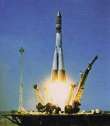| >> |
!!z3MT1ekiAH3 10/27/11(Thu)10:17 No.3960393
File1319725043.jpg-(45 KB, 520x600, vostok1-launch.jpg)
 >>3960371
>The USSR also had a very nice growth for a long time and the economy was growing, the military.
The
Soviet economy was based around increasing the economic inputs until
the proper industrial sector employment would be met. During this
industrialization era, or from the Stalin-era to the early Brezhnev-era,
the Soviet economy grew as fast as the Japanese economy and
significantly faster than that of the United States.
However,
when the industrialization was complete, the economic growth slowed down
and finally stagnated due to the fact that investing in further
economic inputs lead to diminishing returns, as the country was already
largely industrialized.
Apparently, the Soviet planners didn't
think about investing in increasing the efficiency of production which
accounts for most of the economic growth in most of the developed
countries.
The Soviet Union would probably exist to the present
day and probably surpass the US economic size if the planners would
think of basing the investment strategy on increasing the efficiency of
production. But what they did instead when their economy stagnated was
to invest even more into industrialization.
This is why conducting open and active economic debate is important.
There's
an elaborate essay on this topic, which is backed up by empirical
evidence and uses the neoclassical economic growth theory to base it's
claims off:
http://faculty.nps.edu/relooney/IMF_100.pdf
Central
planning is a very viable and efficient system, as long as it uses a
decentralized price system as well as a decentralized industrial output
system for an efficient allocation of resources. |
